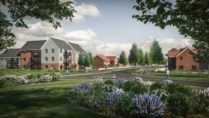Consultation Failings

Cecille Arcurs
Consultation is inherently flawed: all have the same failing – by relying on residents to respond there is usually low participation, and those that do respond often have an axe to grind. The result is a skewed representation of community views which does not stand up to any level of scientific scrutiny.
This leads to several issue: developers are not provided with the necessary feedback to understand the views and aspirations of residents, and it leaves the majority of the community to feel disengaged. Nor does it help politicians who want to support the views of their community, but have to rely on their perception of those views, usually those of the vocal minority who shout the loudest.
It leads to the fundamental conundrum: how do we tap into the up-till-now, silent majority?
Evidence base
The studies and reports for local plans and planning applications are all prepared using accepted standards and approaches with evidence-based backing. The Statement of Community Involvement is one of those reports, it details the consultations undertaken and the results from it; it is neither scientific nor truly reflective of the community view.
Enfranchising the silent majority
As soon as development is mentioned, a community can become polarised: those who oppose it become motivated to retort, while those who are supportive or neutral fade into the background. This results in warped consultation outcomes.
However, what were to happen if some base research was undertaken before the word ‘development’ was even mentioned? What if it was possible to reach out to a true cross-section of the community and ask for their views on housing matters, as opposed to relying on people to respond in consultations? What would happen if a developer could ascertain the majority view, one that is more balanced and informative?
A proactive research consultation approach using the demographic profile of the community to assist researchers going into the community and seek views across the local area. This would not only provide a more valid picture of the community’s view of development, it would be a more constructive way of understanding what the community wants in an area or a site, whether it’s more parking, sustainability, transport links, community facilities, parks, etc.
The outcome of this research can form the basis from which to develop proposals and master plans. It could be used as an evidence base and subsequent consultation surveys can be linked to previous responses, building on them to provide clearer more concise outcomes. The new approach of tapping into the silent majority will further add credibility and accountability to planning consultations and the planning process as a whole.
The second part of this article will be circulated during November summerising the responses from a survey of councillors in England on this topic, undertaken by Survation with Chelgate Local, and what they think of current consultation and how they ascertain the views of their residents.

Strategic land and site promotion
“Chelgate gives a real insight into political thinking at all levels and all political persuasions, …

Energy and infrastructure
From new nuclear and unconventional gas to renewables, waste and airports, our team has worked …

